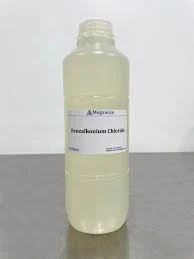cationic pam
Understanding Cationic Polyacrylamide (CPAM) and Its Applications
Cationic polyacrylamide (CPAM) is a synthetic polymer that belongs to the family of polyacrylamides. It is characterized by its cationic nature due to the presence of positive charges in its molecular structure. This unique property makes CPAM an essential agent in various industrial applications, particularly in water treatment, paper manufacturing, and oil recovery.
Structure and Composition of CPAM
CPAM is produced through the polymerization of acrylamide and cationic monomers, such as dimethylaminopropylacrylamide. The primary structure of CPAM consists of a long chain of acrylamide units with cationic groups attached. The introduction of these positively charged groups enables CPAM to interact effectively with negatively charged particles and colloids in various environments. This interaction leads to flocculation and coagulation, key processes in many applications.
Applications in Water Treatment
One of the most significant uses of CPAM is in water treatment facilities. Water often contains suspended solids, organic matter, and other impurities that require removal to ensure safety and clarity. CPAM acts as a flocculant, aiding in the aggregation of these impurities into larger particles that can be easily removed from the water. The positive charges on the CPAM molecules neutralize the negative charges of the suspended particles, promoting the formation of larger flocs.
CPAM is particularly effective in treating wastewater from industries such as textiles, paper, and food processing, where high levels of suspended solids are common. Furthermore, CPAM can be tailored to achieve specific molecular weights and charge densities, enhancing its efficiency for particular applications.
Use in Paper Manufacturing
cationic pam

In the paper industry, CPAM serves multiple purposes. It is utilized as a retention aid, helping to retain fine fibers and fillers during the papermaking process. This not only improves the quality of the paper but also reduces the amount of raw material needed, contributing to more sustainable practices.
Additionally, CPAM is employed as a wet strength agent, enhancing the strength of paper products when wet. This is particularly important for products that require durability in moist environments, such as food packaging and tissue paper.
Role in Oil Recovery
In the oil and gas industry, CPAM finds its utility in enhanced oil recovery (EOR) techniques. It can improve the efficiency of oil extraction from reservoirs by reducing the viscosity of the water injected into the oil wells. This process allows for better displacement of oil, increasing the overall yield from the wells. CPAM also assists in stabilizing the water-oil emulsion, which can further optimize extraction processes.
Economic and Environmental Considerations
The use of CPAM presents numerous economic benefits, including reduced operational costs and improved efficiency across various industries. Nevertheless, there are environmental considerations associated with its usage. While CPAM is generally considered safe, the long-term effects of its disposal into ecosystems remain a topic of research. Consequently, industries are encouraged to adopt best practices in terms of CPAM application and disposal, ensuring that environmental risks are minimized.
Conclusion
Cationic polyacrylamide is a versatile polymer with significant applications across water treatment, paper manufacturing, and oil recovery. Its unique properties enable it to effectively interact with various materials, leading to improved efficiencies and product quality in multiple industries. As industries continue to seek sustainable solutions, understanding and optimizing the use of CPAM will be essential for balancing economic viability with environmental responsibility. As research and technology advance, it is anticipated that new applications for CPAM will emerge, further cementing its importance in modern industrial processes.
-
Water Treatment with Flocculant Water TreatmentNewsJun.12,2025
-
Polymaleic AnhydrideNewsJun.12,2025
-
Polyaspartic AcidNewsJun.12,2025
-
Enhance Industrial Processes with IsothiazolinonesNewsJun.12,2025
-
Enhance Industrial Processes with PBTCA SolutionsNewsJun.12,2025
-
Dodecyldimethylbenzylammonium Chloride SolutionsNewsJun.12,2025





